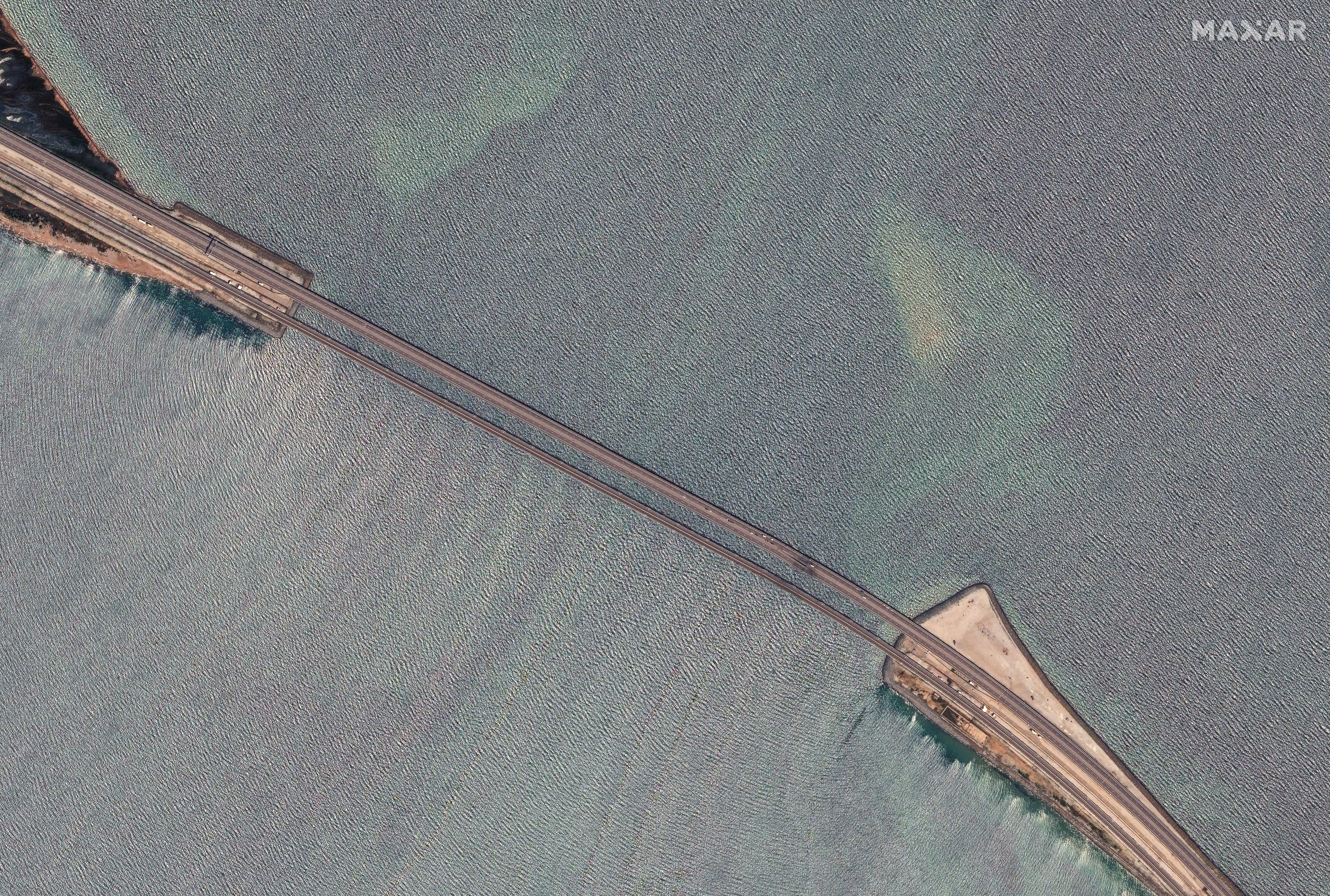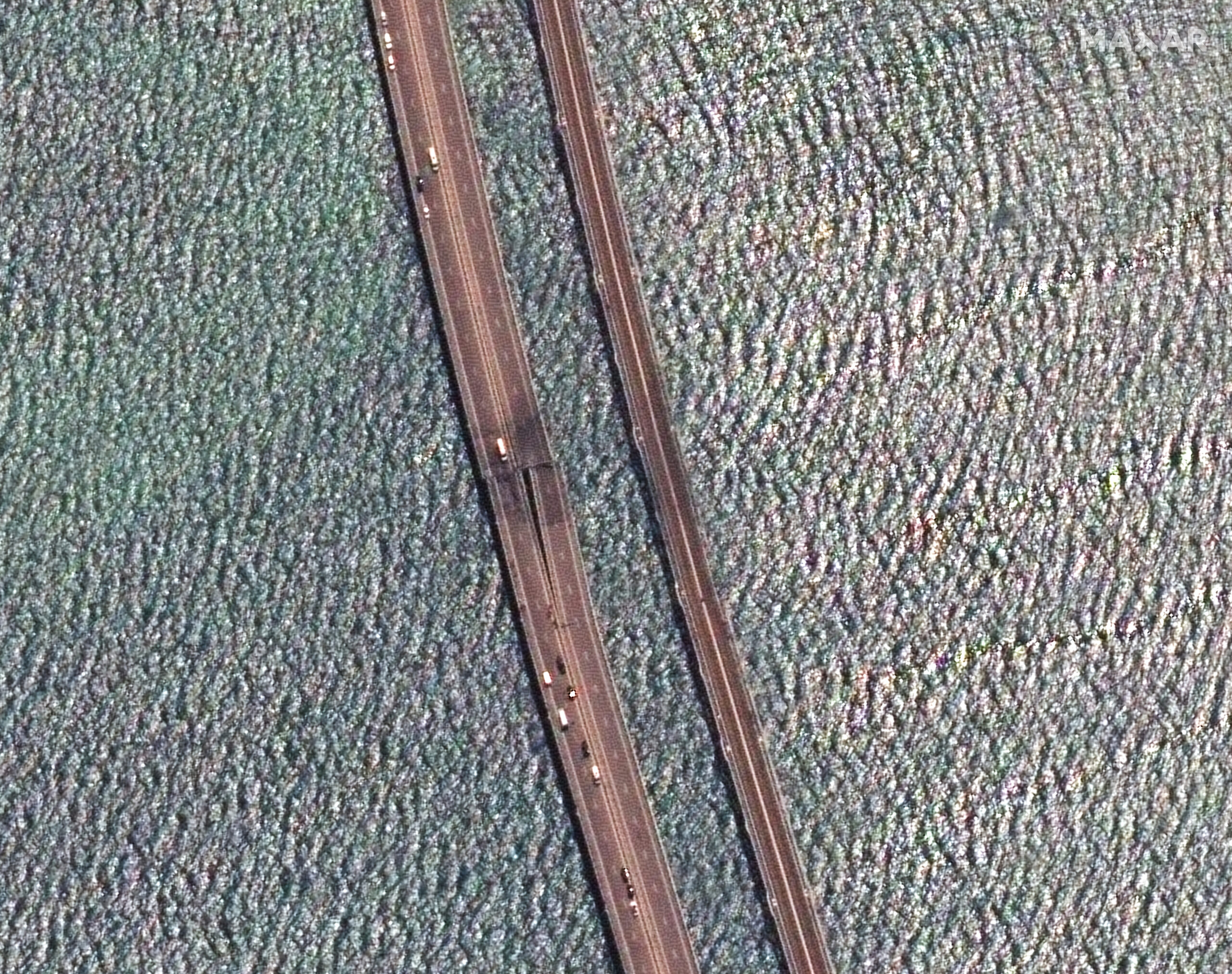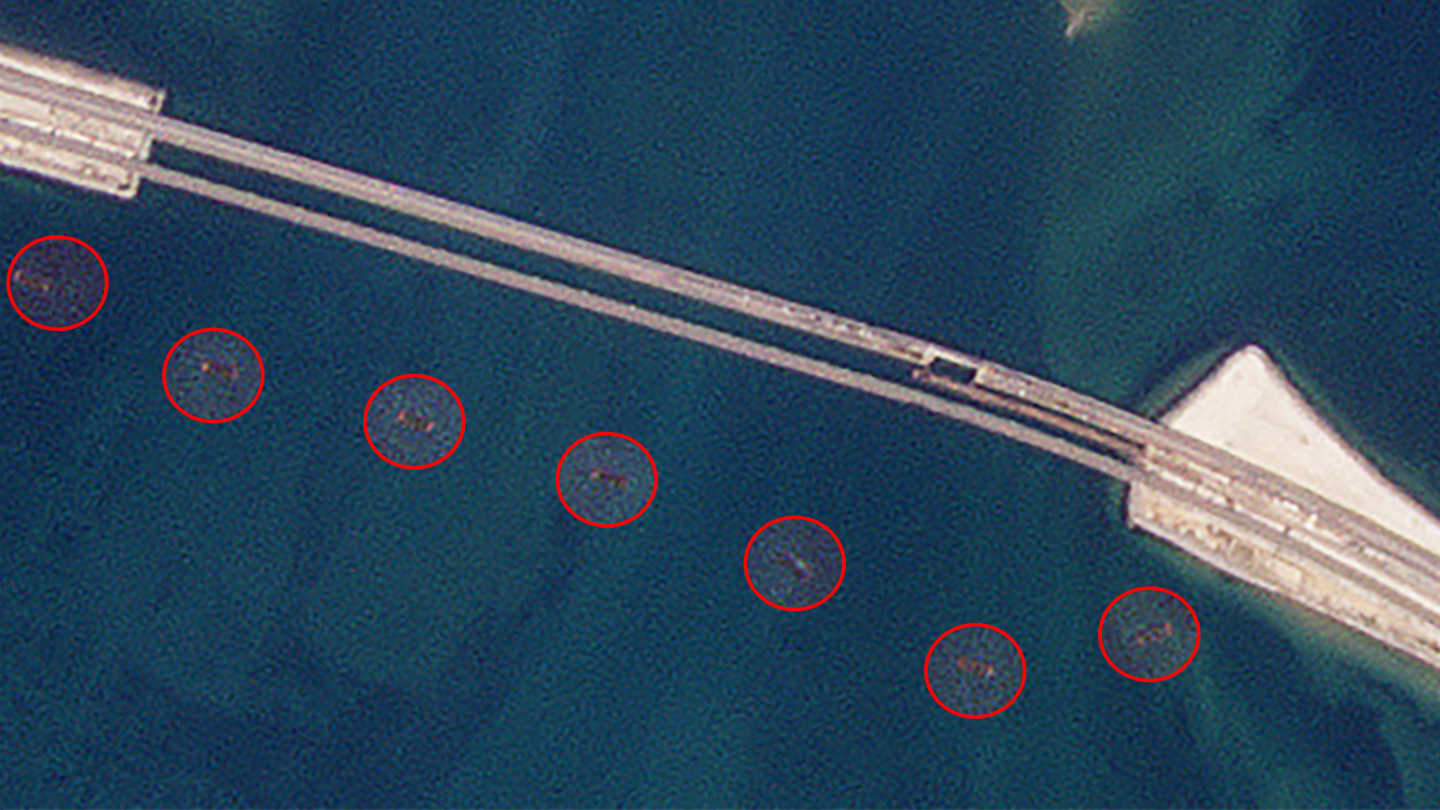New satellite imagery confirms a Ukrainian claim that Russia is sinking vessels along the Kerch Bridge to form a protective barrier against future uncrewed surface vessel (USV) attacks.
The low-resolution image, captured Tuesday by Planet Labs, appears to show seven partially submerged vessels arrayed a little more than a tenth of a mile apart just south of the bridge. That location is about 15 miles north of where the mouth of the Kerch Strait meets the Black Sea, which is the route Ukrainian USVs have almost certainly taken to reach the bridge before. It was attacked by Ukrainian USVs July 17. The Planet Lab image also bolsters the earlier confirmation of the sunken-vessel barrier by independent naval warfare analyst HI Sutton (@covertshores).
The bridge was attacked by a Ukrainian “Sea Baby” USV, which, as CNN first reported, carried “up to 850 kilograms of explosives” — or upwards of about 1,800 pounds. That’s a larger payload than any other known Ukrainian drone boat. You can read more about it in our story here.

Satellite imagery provided by Maxar Technologies at the time showed the north span of the bridge received the most damage, meaning that the USV most likely crossed under the south span before exploding underneath the north span.


Photographs emerged after the attack showing an even closer view of the damage to Vladimir Putin’s prized $4 billion span linking Russia with the Crimean peninsula it has occupied since 2014.
As we reported Aug. 22, Ukraine’s Defense Intelligence Directorate (GUR) said Russia planned to sink six ferries near the bridge in an attempt to protect it against future USV attacks. They are being sunk along the eastern section of the bridge, just southeast of Tuzla Island, that sits too close to the water for large ships to pass under.
“Between the flooded ferries, the Russians intend to establish a boom fence. In this way, the enemy seeks to protect the Kerch bridge from defeat,” the GUR said at the time.
The spy agency said the bridge is being targeted to choke off Russian supply lines.
“Periodic successful attacks by the Security and Defense Forces of Ukraine on this legitimate military goal led to serious damage to the construction of the bridge, in particular its road and railway canvases. Recent strikes on the Kerch Bridge once again worsened the situation for the grouping of enemy troops in southern Ukraine and caused a hysterical reaction of the military and political leadership of the Moscow.”
Russia, as we have previously reported, has constructed boom obstacles across the mouth of Sevastopol harbor as part of a layered sea, land, and air defense concept. Ukraine began launching USV attacks there in October, 2022. While the defenses are growing more elaborate after drone attacks of increasing sophistication, they are not infallible. Video taken during a May 23 attack on Sevastopol, home of Russia’s Black Sea Fleet, appears to show one of the USVs hitting the obstacle, but two others able to jump across it.
The defensive system near the Kerch Bridge, which is still under construction, is different of course, because it relies on sunken vessels to partially block approaches to the span.
Sutton, who has been following this issue closely, told us Tuesday morning that the sunken-vessel barrier is “likely to be moderately effective against surface and underwater drones.”
It is possible, he added, “that Russia will suspend chains and/or nets between” those vessels “to create barriers. These nets, known as booms, can have fences on top to prevent fast maritime drones driving over the top of them.”
It is similar “to the barriers we see in Russian harbors around Crimea,” Sutton said. “The difference compared to harbor defense is that these do not have to be opened to let boats through.”
Sutton was not sure as to what kind of vessels Russia used to create the bridge blockade, noting they could be ferries or barges.
These barriers are clearly made to create obstacles requiring some degree of precision to navigate through just on their own, even without additional nets and other barriers. Drone boats with man-in-the-loop control working at night may have trouble successfully doing that, especially if under fire.
A Ukrainian underwater drone, which a company called Ammo Ukraine says it is developing, could change the calculus when it comes to the focus on USV attacks to critical Russian maritime infrastructure. Regardless of this particular system and its developmental state, it’s indicative of Ukraine’s high interest in alternative means of putting Russian targets at risk over great distances and its expanding repertoire of capabilities for that mission set.
It is even possible that Ukraine won’t need drone boats to attack the bridge in the not so distant future, or at least it won’t have to rely on that mode of attack primarily. As we reported earlier Tuesday, Kyiv has modified Neptune anti-ship missiles for land attack with a reported range of 250 miles and a warhead of about 770 pounds. That would mean Ukraine could launch a strike, with considerable punch, from well behind its own lines. As it continues to creep toward Crimea, other long-range strike options will open up, as well. You can read more about the new variant of Neptune in our story here.
One thing that is clear is Ukraine’s continued interest in launching another strike on the Kerch Bridge, which was first damaged by a Ukrainian attack Oct. 8, 2022. It remains a top target, not just for its major logistical value, but also for its symbolism.
Contact the author: howard@thewarzone.com
